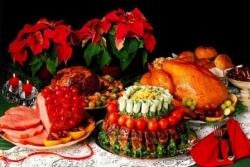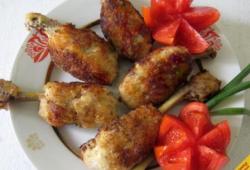Best Russian cuisine
 Russians since ancient times it is considered to be the hospitable people able and to sing a drinking song, and glass of pepper brandy to drink, and to treat dear visitor with everything, than the house is rich, and the soul is generous and eager for love. The Russian table for all the time of feasts is updated several times. And every time is presented by original and original dishes which will please everyone. Russian cuisine is so rich that it is so simple to give some assessment or the characteristic not simply. We will consider key concepts and basic components of a classical culinary variety of Russia.
Russians since ancient times it is considered to be the hospitable people able and to sing a drinking song, and glass of pepper brandy to drink, and to treat dear visitor with everything, than the house is rich, and the soul is generous and eager for love. The Russian table for all the time of feasts is updated several times. And every time is presented by original and original dishes which will please everyone. Russian cuisine is so rich that it is so simple to give some assessment or the characteristic not simply. We will consider key concepts and basic components of a classical culinary variety of Russia.
Key directions and characteristic differences:
1. Russian soups.
- huge choice of first courses;
- obligatory giving to pastries soup (pies, rasstegais, coulibiacs, pretzels, rolls, small loafs);
- "business card" of kitchen of Russians - Russian cabbage soup which distinguish to protozoa of methods of preparation, are very nutritious and tasty;
- the competitor of Russian cabbage soup - beetroot soup, mainly in those regions where is cultivated beet;
- time modified ancient soup in more modern version - soup;
- yushka prepare with various grain and as option with addition of different grades of fish - to an ear;
- traditional giving with use of wooden spoons and pots;
2. Meat dishes and poultry dishes.
- various units for thermal treatment of products: "black" furnace, spit, tripod, naked flame;
- in the furnace the food was baked in pots, different in a form and the size (pig-iron, ceramic and iron);
- special smelting and a design of pots allowed to influence a dish in a preparation time, mainly from sides;
- frying and roasting are made generally whole carcasses of poultry (the goose baked with apples, a turkey with vegetables fried in oil, braised beef with greens and seasonings);
- the special role in culture of Russian cuisine is played by various meat jellies which can be seasoned with a horse-radish and mustard.
3. Cereals and grains:
- any cereal dishes obligatory component of the menu of the Russian;
- a variety of grain symbolizes prosperity and richness of the house;
- similar dishes could move as in a salty look, and sweet with milk, honey or fruit;
- a national dish by a holiday "boozing";
4. Flour products and pastries:
- obligatory component of ceremonies, festive traditions;
- pies, coulibiacs and pancakes were served in various variations with the most original stuffing; as obligatory component of weddings, celebrations of Christmas and other cheerful actions;
- dear guests and especially important esteemed people were met by crown pastries - a loaf or a loaf of bread with salt.













